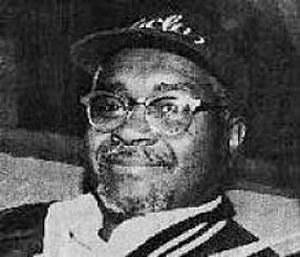Lorenzo Kom'boa Ervin facts for kids
Quick facts for kids
Lorenzo Kom'boa Ervin
|
|
|---|---|
 |
|
| Born | March 30, 1947 Chattanooga, Tennessee, U.S.
|
| Occupation |
|
|
Notable work
|
Anarchism and the Black Revolution |
| Political party | Black Panther Party |
| Movement |
|
| Spouse(s) | JoNina Abron-Ervin |
| Military Career | |
| Allegiance | United States |
| Service/ |
U.S. Army |
Lorenzo Kom'boa Ervin was born on March 30, 1947. He is an American writer and activist. He was once a member of the Black Panther Party. He also worked with a group called Concerned Citizens for Justice.
Lorenzo Ervin was born in Chattanooga, Tennessee. He has lived in Memphis, Tennessee, since 2010.
Contents
Early Life and Activism
Joining the Fight for Rights
Lorenzo Edward Ervin, Jr., was born on March 30, 1947. When he was 12, he joined the youth group of the NAACP. This group worked to end unfair treatment based on race.
He took part in sit-in protests. These protests helped to end racial segregation in Chattanooga. Segregation meant that Black and white people were kept separate in public places.
Military Service and Anti-War Views
During the Vietnam War, Lorenzo Ervin was chosen to serve in the army. He served for two years. While in the army, he became an activist against the war.
In 1967, he joined the Student Nonviolent Coordinating Committee. Soon after, he became a member of the Black Panther Party. Both groups worked for civil rights and equality.
Time in Prison and Learning About Anarchism
A Difficult Journey
In February 1969, Lorenzo Ervin traveled to Cuba by plane. He was trying to avoid legal issues. After being in Cuba and then Czechoslovakia, he became unhappy with how those governments worked.
Later, Cuba sent him back to the U.S. He was arrested in September 1969. He faced charges related to the plane trip. A jury found him responsible, and he received a life sentence. He was the first person in the U.S. to get a life sentence for this type of offense.
Discovering New Ideas
While in prison in the late 1970s, Ervin learned about anarchism. This is a political idea that suggests people can live without a ruling government. He read many books on the topic.
A group called the Anarchist Black Cross supported him. While in prison, Ervin wrote several pamphlets. He also wrote a well-known book called Anarchism and the Black Revolution. This book has been printed many times.
After 15 years, legal efforts and support from people around the world led to his release from prison.
Working for Change After Prison
Fighting for Justice in Chattanooga
After his release, Ervin went back to Chattanooga. He joined a local civil rights group. This group was called Concerned Citizens for Justice. They worked to stop police brutality and fight against groups like the Klan.
In 1987, Ervin helped with a lawsuit. This lawsuit led to big changes in the Chattanooga government. It also helped several Black people get elected to the city council.
Organizing for Community Rights
On April 26, 2008, Ervin and his wife, JoNina Abron-Ervin, led a march in Nashville, Tennessee. They protested the deaths of young people in certain facilities. They also protested the deaths of prisoners in a detention center.
On June 12, 2012, Ervin and other Black activists held a meeting. It was called "Let's Organize the Hood." They created the Memphis Black Autonomy Federation. This group works to fight high unemployment and poverty in African American communities. They also work against police brutality and the mass imprisonment of Black people.
Australian Speaking Tour
A Trip with Challenges
In July 1997, Lorenzo Kom'boa Ervin was invited to visit Australia. An anarchist group called "Angry People" invited him to give talks. Some politicians in Australia were concerned about his visit.
The Prime Minister, John Howard, was surprised that Ervin had been given a visa. Immigration officials started an investigation. They held Ervin in Brisbane and canceled his visa. They said he was not of good character, but Ervin disagreed.
Legal Battle and Public Attention
Ervin had visited many countries on lecture tours since 1983. His Australian visa was granted through an electronic system. His imprisonment in Australia was taken to the High Court of Australia. The Chief Justice, Sir Gerard Brennan, gave Ervin his visa back. He also ordered his release from prison. The judge said Ervin did not seem to have been treated fairly.
The Australian government agreed to pay Ervin's legal costs. Ervin felt that the Prime Minister should apologize. His detainment led to protests around the world. People protested outside Australian embassies in many countries.
Continuing the Tour and Leaving Australia
After four days in prison, Ervin was released. He attended NAIDOC celebrations in Musgrave Park. He was a guest of the Murri people, who are Indigenous Australians. He gave a short speech there.
Ervin continued his speaking tour. He tried to visit an Australian Black Panther activist in jail but was not allowed. The government's actions actually brought more attention to Ervin's tour. Many more people attended his talks than expected.
Immigration Minister Philip Ruddock cut short a trip to deal with the issue. Ervin left Australia on July 24, 1997. He said immigration officials had threatened to deport him if he stayed longer. After this, Australia made its visa checks stricter for some visitors.
See also
 In Spanish: Lorenzo Kom'boa Ervin para niños
In Spanish: Lorenzo Kom'boa Ervin para niños

